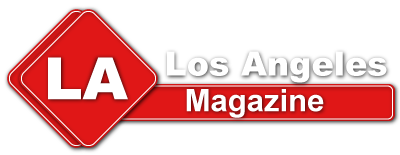I am pretty sure that almost every American has had cereal as a breakfast or even as a quick snack to satisfy untimely hunger pangs. Its popularity can’t be described properly through words, but the large variety of cereal boxes on shelves is an open testament to how much Americans love it. A few days ago, I was reading a report that mentioned there are around 5,000 different types of cereals available in the market, and at that very moment, I was holding a cereal box in my hand.
After knowing this little fact, I wondered about the evolution process of the box in my hand. When I was a little kid, cereal brands used to go for different designs, and now the branding and marketing game has significantly changed. So with that in my mind, I decided to spend my next holiday researching how a box of cereal has evolved in the last few decades.
So, if you are a curious bee like me and want to know the different phases of the box design journey, hang on with me for a while. For your ease, I have divided the journey of custom cereal boxes into small periods. I hope a 10-year gap is good enough for you because the changes saw a huge shift after every decade.
The Boom of Colors from the 1950s to the 1960s
I won’t say that there wasn’t any proper cereal packaging before the 50s, but the real boom came after half of the last century was over. Full-color printing along with vintage designs was the limelight of this period. The character-based cereal packaging that you still see on shelves was also started during this era. Some examples include Tony the Tiger, Snap, and Crackle & Pop.
I must give all the marks to the brands of that time that started using bold and bright colors to make their products stand out on shelves, including mini boxes of cereal. They also played around with the dimensions of a box of cereal to offer different quantities so that buyers can get the one they find appropriate.
During my research into the much unexplored world of cereals, I came to know that some companies also started marketing their breakfast staple as a healthy snack with words like protein cereal and others.
The Rise of Pop Culture and Interactive Packaging (1970 to 1980s)
This is the time when the “build your own snack box” trend got highly relevant. Not only cereals, but also other quick snacks like popcorn, crackers, and cookies saw huge customizations in terms of their packaging. Almost every brand opted for a personalized cereal box and used different design features like vibrant typography and movie and TV mascots. The design that shocked me the most was a box with a Barbie on it. Just imagine what would happen if you still saw such boxes on shelves. Well, to your surprise, they were quite a thing until 2009.
The thing I liked the most during this time was the inclusion of interactive elements like puzzles, mazes, and collectibles. Most of them are still a hit among the little cereal buyers. The health-based marketing trend that started during the 50s was now at its peak.
The Peak of Past Trends (1990s)
To my slight disappointment, the 90s did not witness any new trends; rather, the styles of the last 30 years peaked at this time. I guess the brands decided to keep the good things for the next century. Well, we will get to know about it in the next section.
During the 90s, there was an explosion of colors, fonts, mascots, and imagery on store aisles. This is the time when the cereal in the blue box style got very popular. Many brands, including Kellogg’s, opted for such designs for their small boxes of cereal and large ones too. There was a race among companies to get the best cereal box labels in the market.
While these trends encouraged competition and many brands came up with better products to attract buyers, I was happy while reading that they didn’t let go of the health benefits of cereals. However, there was little to no focus on eco-awareness while getting these boxes.
The Rise of Sustainability (2000s to 2010s)
With the dawn of the 21st century, a lot of things changed for the world. The race to be the best was still there, but it had a totally new dimension. And that, to my happiness and that of millions of others, was about sustainability. The cereal brands also jumped on the bandwagon and started adopting eco-friendly and green trends, such as using recycled paper, plant-based liners, and water-based inks.
Other than sustainability, technology was also welcomed with open arms during the later parts of the 2010s by including QR and AR codes, social media handles, and other such elements for providing a better experience to buyers.
It really made me happy when I learned that big brands like Kellogg’s opted for simple layouts with mascots. These were minimal designs that used less ink and eco-friendly materials.
Health-Focused and Minimal Designs (2020s to Present)
Cereal box packaging of today has come a long way from the overly decorated boxes of the 1950s. If you show a cereal box of the 50s to a 15-year-old, they’ll probably be amused or may even start laughing.
I am pleased to share that today’s boxes are clean, eco-friendly, use less material, and follow all the regulations set by the FDA and local bodies. The focus is more on explaining the health benefits rather than packing cereals in fancy boxes.
In the end, I would like to say that the future of cereal packaging is quite bright. Even my own brand’s sales have increased exponentially, and all thanks to Packaging Mania. They have helped me in so many different ways that I can’t even explain. If you are also stuck with your custom packaging, then contact them now.



